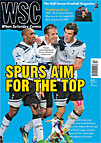 The biggest problem for the Brazilian champions is how to sustain their recent success. Robert Shaw reports
The biggest problem for the Brazilian champions is how to sustain their recent success. Robert Shaw reports
Fluminense’s Brazilian National Championship success in 2010 was a remarkable turnaround by any standards. In October 2009 the club was reckoned to be heading for Serie B but a spectacular series of victories saved them, creating the platform for a tilt at the top in 2010. Following the end of the season in December the Brazilian FA (CBF) revised the status of previous championships, so Fluminense were also declared “national champions” for 1970 (the national competition only started officially in 1971).
This time around some believed that Flu had blown it in mid-November, with a home draw against Serie B-bound Goiás opening the door for Corinthians, whose 2-1 win the previous day over Cruzeiro had come courtesy of a dubious 88th-minute penalty award for a challenge on Ronaldo. But Fluminense just kept going while Corinthians ran out of puff. Flu’s efforts were helped by away wins in the closing weeks over São Paulo and Palmeiras. São Paulo even managed to have two players sent off in their endeavours to be the perfect hosts.
Fluminense had blocked the CBF’s move to prise away their coach, Muricy Ramalho, to become Brazil manager in August, and the following month were not discouraged by being effectively evicted from the Maracanã as the stadium was closed for World Cup 2014 preparations (see WSC 285).
The team also overcame untimely injuries to midfielder Deco and first-choice strikers Emerson and Fred. Curiously the mainstay of the side was an import, Argentine midfielder Darío Conca’s diminutive frame withstanding all 38 games. Conca’s success offset the alarming 14-game goal drought of hapless target man Washington. Other, less celebrated, players were also crucial – the central defensive pairing of Gum and Leandro Euzebio fashioned the tightest defensive record in the league.
Whether the title will yield anything lasting is hard to predict – 2009 champions Flamengo narrowly missed relegation this time. The incoming Flu president Peter Siemsen is, at 43, younger and apparently more forward-looking than his predecessors but still has his work cut out to redress their collective legacy. A debt reckoned by the O Globo newspaper to be $190 million (£122m) makes Fluminense the most financially handicapped Brazilian club – £12m more than the black hole that is Flamengo.
This debt has been created by financial mismanagement and interminable labour disputes in which a series of players and coaches are owed money based on court decisions. Paring back this figure while sustaining a team capable of winning further titles could prove tough.
Ticket sales have also been problematic for Fluminense. Chaos ensued at most of the ticket offices for a game against Guarani. Touts had a field day working the huge queues, with entradas resold in some cases for hundreds of pounds. One fan suffered a fatal heart attack while queueing – embarrassing for a club sponsored by a health care company.
Getting fans to go to Botafogo’s Engenhão stadium rather than the familiar Maracanã has also proved problematic. Aside from the final game, Fluminense rarely managed to even half-fill the 45,000-capacity venue. Only 23,126 witnessed the crunch game against Corinthians in mid-September and a week later a paltry 6,000 bothered to turn up to watch the 5-1 drubbing of Atlético MG. Producing reasonably sized crowds throughout the season provides headaches for Fluminense, as with other Brazilian teams, even when the club is near the top.
A solution to problems with marketing and ticketing is being sought through a partnership with sports agency Traffic. But there are doubts about the nature of such deals, as there are about the club’s principal benefactor, the health insurance company Unimed. Unimed’s president, Celso Barros, has helped to bankroll Fluminense, funding the acquisition of star players and keeping the club afloat. But critics argue the price is too high, with Unimed having excessive influence in player acquisition and the club’s overall direction. Apologists would prefer him to stand for office, suggesting he has been a de facto president.
Another limitation is the lack of training centre. A modern training facility underpinned current boss Muricy’s success in winning three consecutive titles with São Paulo from 2006, but he has to cope with a bumpy practice pitch at Fluminense. Siemsen pledges progress but finance remains a possible sticking point with Unimed reluctant to fund the project single-handedly.
Fluminense’s youth base has previously nurtured the likes of Carlos Alberto and Marcelo, as well as the Man Utd twins Rafael and Fabio. But a popular complaint still holds – players are sold too cheaply or prematurely to shore up the club’s precarious finances. Visit the Fluminense HQ in the well-heeled neighbourhood of Laranjeiras and one might be transported back to Edwardian England. The challenge facing the club’s administration is to build on this year’s success and persuade many that the club is ready to embrace the 21st century.
From WSC 288 February 2011